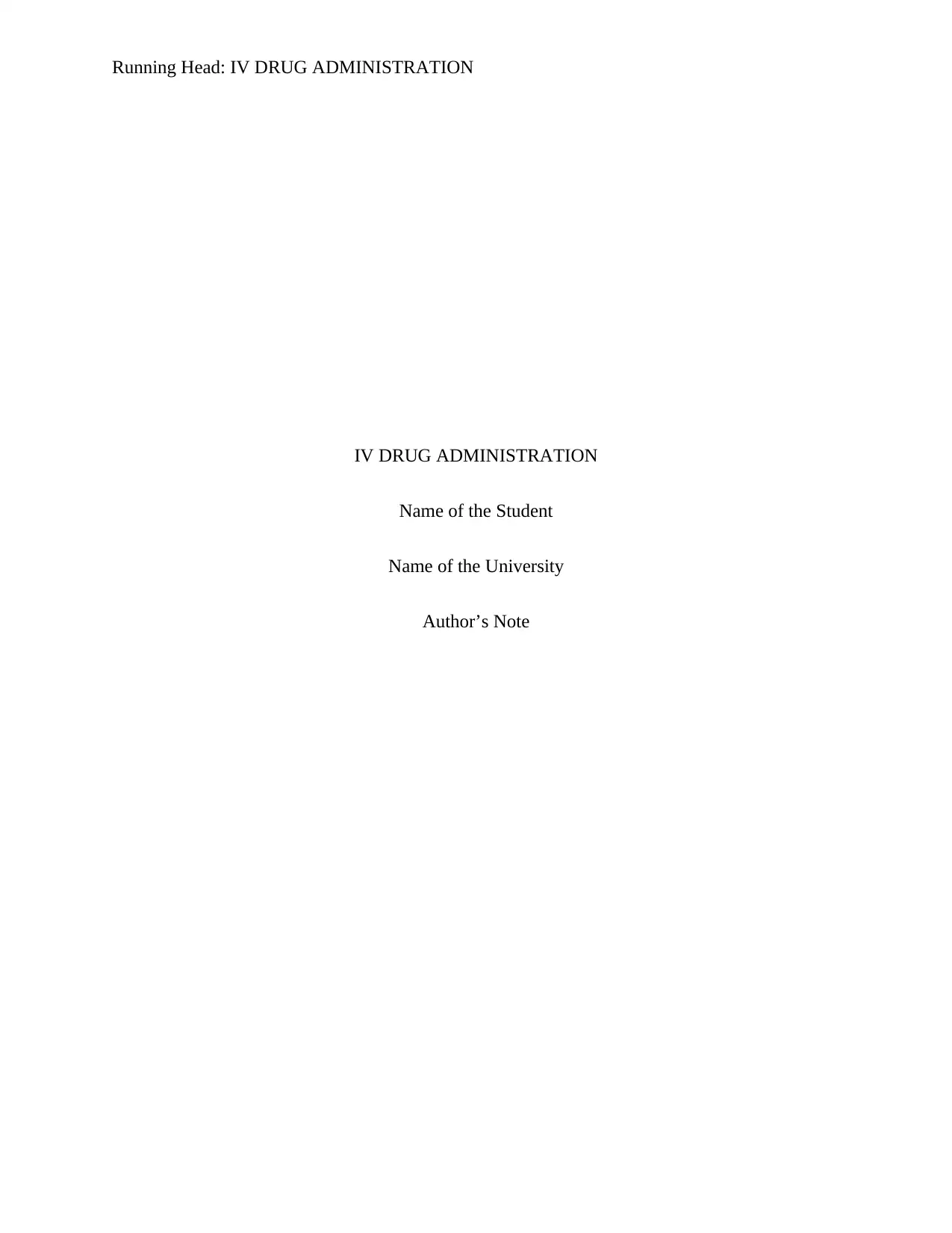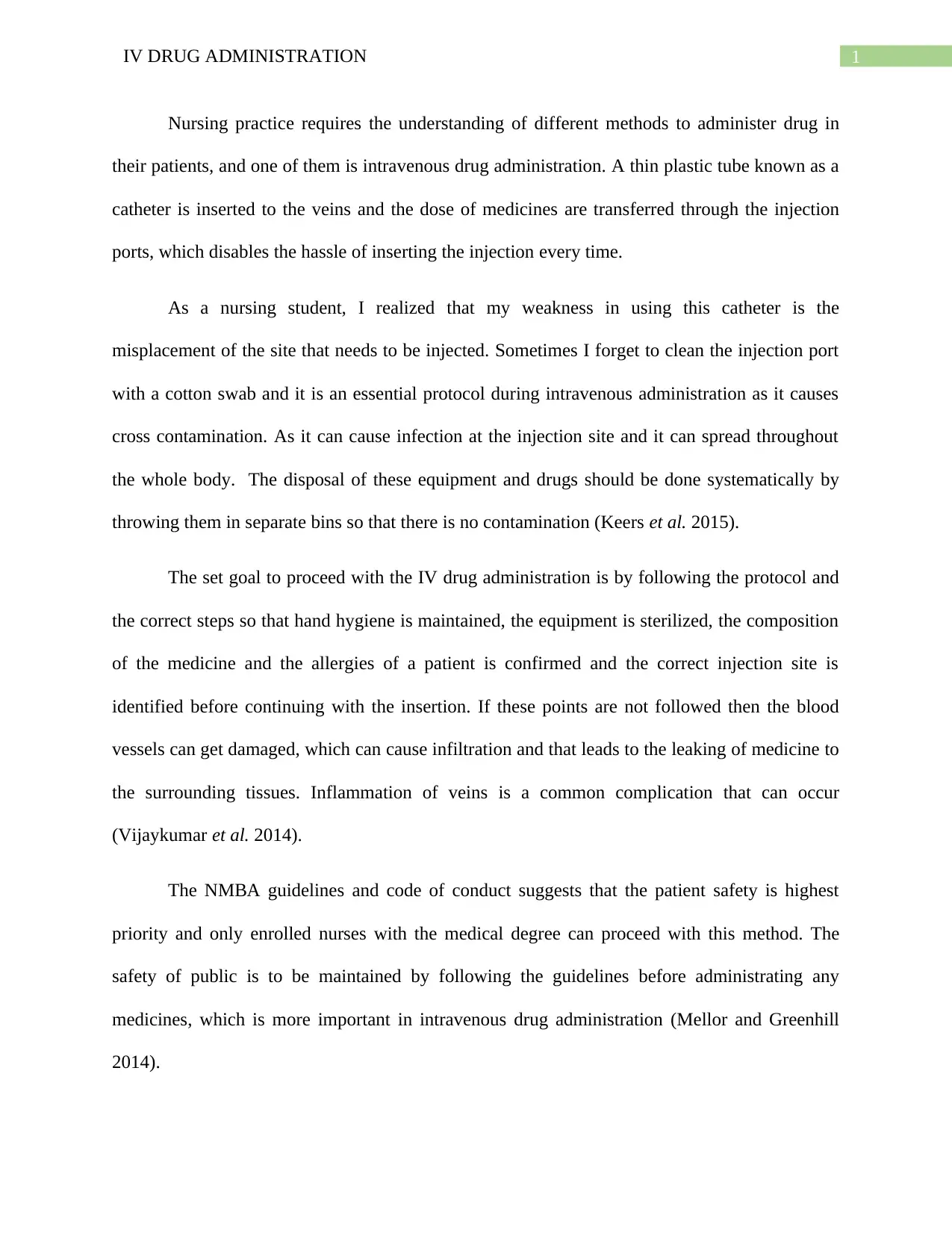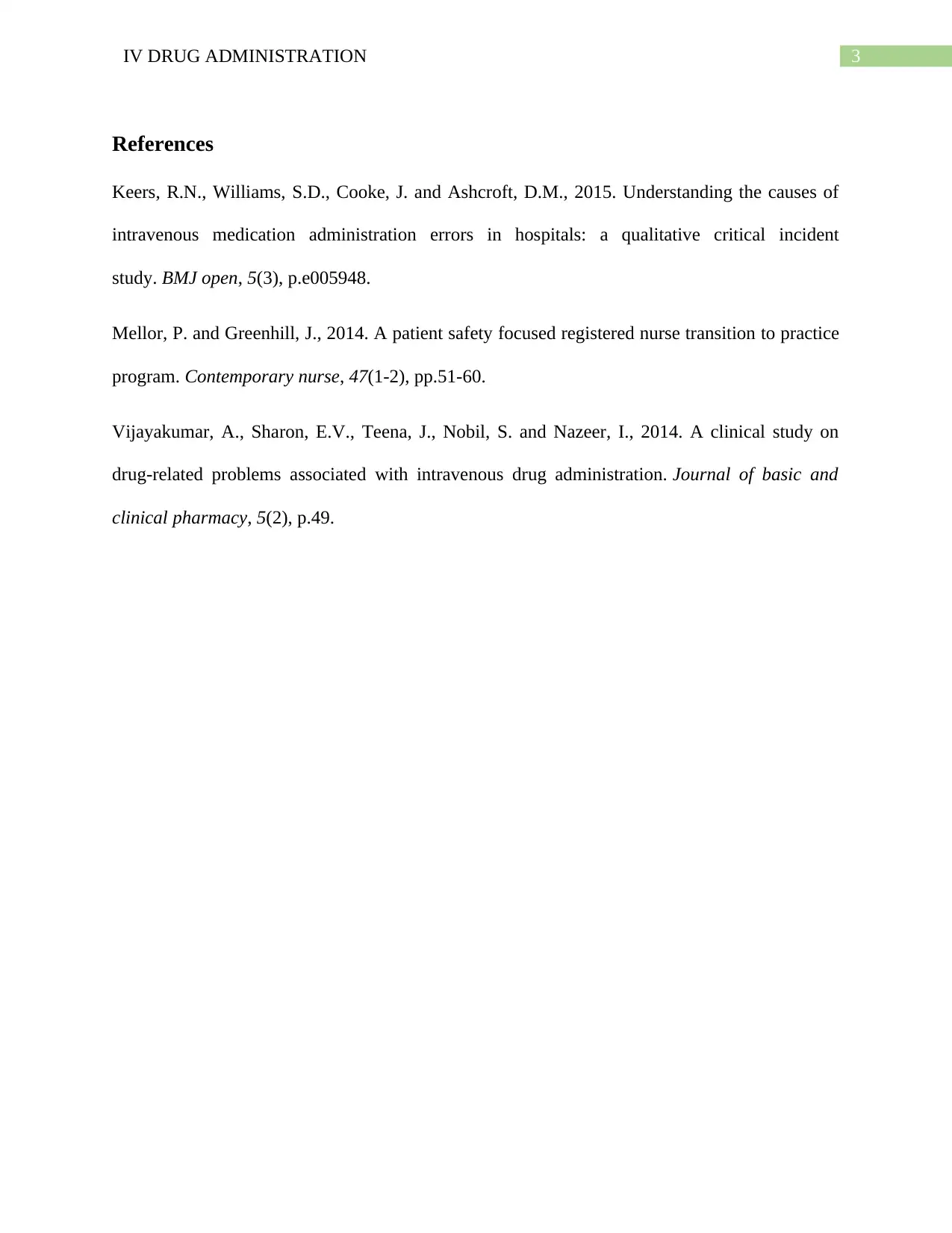IV Drug Administration: Best Practices and Safety Report
VerifiedAdded on 2022/09/26
|4
|483
|25
Report
AI Summary
This report examines the critical aspects of intravenous (IV) drug administration, focusing on the procedures, safety protocols, and potential complications. The report begins with a nursing student's personal reflection on the challenges of IV administration, specifically addressing the importance of correct injection site selection and adherence to hygiene standards to prevent cross-contamination. It emphasizes the need for proper disposal of equipment and drugs. The report highlights the importance of adhering to protocols, ensuring sterile equipment, verifying medication composition, and assessing patient allergies. Furthermore, the report discusses the potential risks associated with improper techniques, such as damage to blood vessels, infiltration, and phlebitis. The report references the NMBA guidelines and the importance of patient safety. The references cited support the information presented in the report and provide additional resources for further study.
1 out of 4











![[object Object]](/_next/static/media/star-bottom.7253800d.svg)